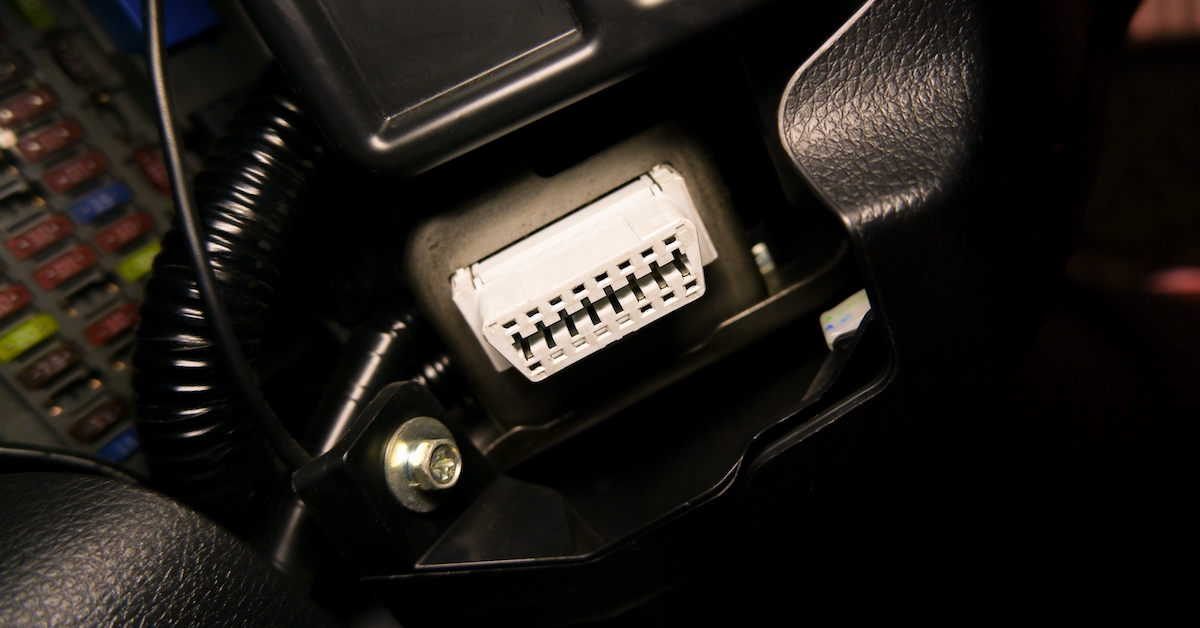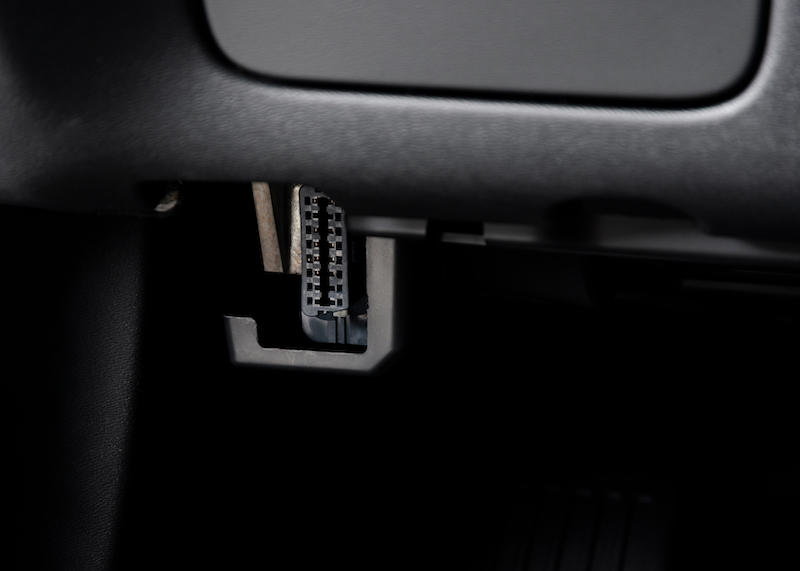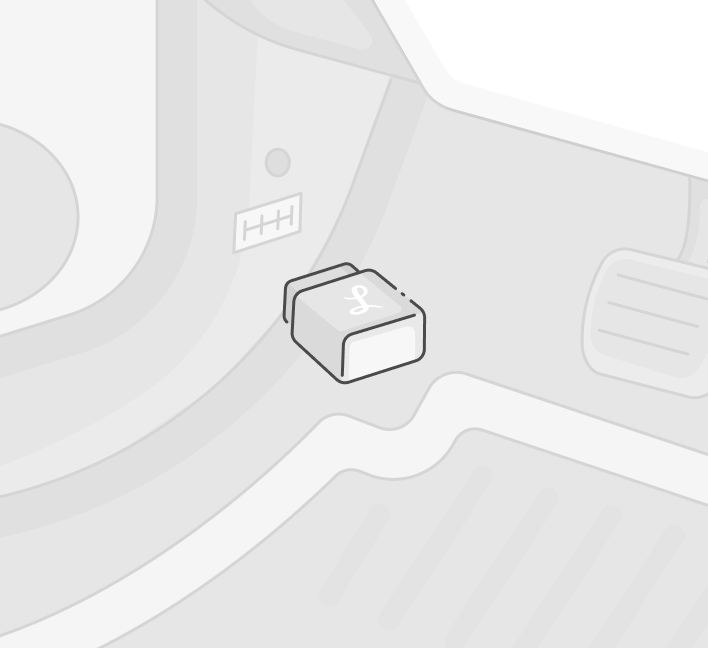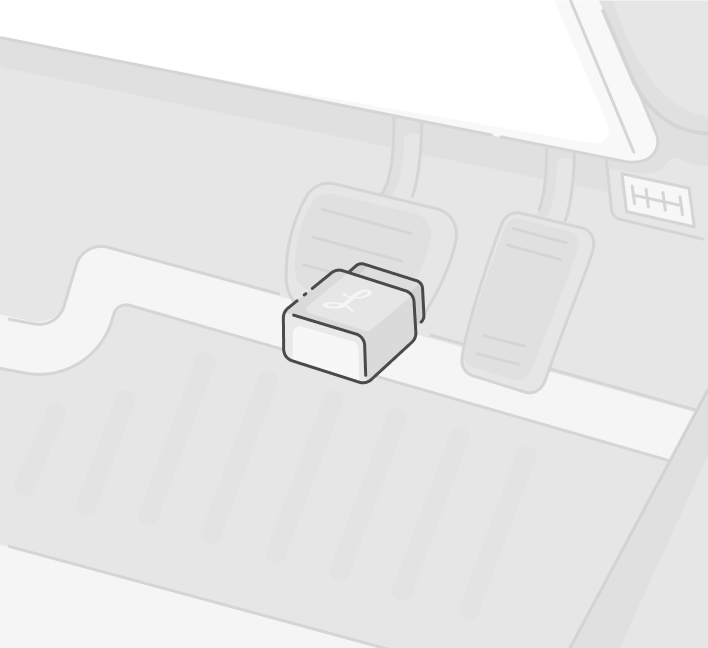Where is My Car’s OBD-II Port?
A simple guide—with illustrations—to get your car connected.

A simple guide—with illustrations—to get your car connected.

At Lemonade Car, you can save a lot of money just by driving with a mileage counting device that plugs right into your car’s OBD-II port.
Great! So now you might be asking yourself: Where the heck is my car’s OBD-II port?
Skip ahead for some quick tips and tricks to easily find that port and get on the road here.
On-board diagnostics (OBD) ports are connected to the in-vehicle computer that collects info about your car—things like mileage, emissions, car diagnostics, and driving behavior. If your car was manufactured in the US after 1996, it probably has one of these ports—but there are some exceptions.
When you drive with Lemonade Car, we send you a device that you’ll need to plug into your car’s OBD-II port (aka OBD2 port) before setting it up using the Lemonade app. The device lets us track your mileage—down to the foot!—so we can fairly price your policy.
The slightly tricky thing is that the port is in different locations depending on what car you drive. We’ll get into that, but let’s first take a look at the OBD-II port itself.

Your car’s OBD port is a small rectangular outlet that has 16 distinct pinpoints on its face. Each port roughly looks the same, but the material that it’s made from and its color can vary. Yours might be made of metal or plastic; it may be black, white, pink, or multi-colored.
Keep in mind: Your car’s OBD port might have a plastic cover over it for protection. That cover may say things like “Diagnostic Connector Do Not Remove” or “OBD-II” to indicate the port’s location.
If your car has an OBD port cover, you’ll need to remove it to plug in the device. If you’re having any issues removing the plastic cover—or just want to be extra cautious—check with your car’s manufacturer, or a trusty auto technician, about the best way to take it off.
It’d be great if every car’s OBD port was in the same place. But alas, this isn’t the case. The specific location of your car’s OBD-II port will depend on its make, model, model year, and body type.
Let’s take a spin through where to look first.
You probably won’t have to look further than the driver’s side of your car to find the OBD port. Most of the top US automakers—including Toyota, Chevy, and Volkswagen—usually put the OBD port under the driver’s dashboard, within two feet of the steering column.
First, check below and to the left of the steering wheel. The port could be near the brake pedal or fuse box (or even in the fuse box).

If you don’t find the port there, look a little bit further to the left, next to the driver’s side door.

Still no luck? Then it might be slightly to the right of the steering wheel.

There’s a chance that your car’s OBD port isn’t on the driver’s side. If that’s the case, the next best place to check is the center console.
For example, in certain Audi and Renault models the port is near the top of the center console, under the console’s plastic cover. It could also be just above the center console, near the radio.
Keep in mind: OBD ports that are around the car’s center console are more likely to have a plastic cover over them, which might be difficult to remove.
Lucky you, it’s scavenger hunt time!
There are a few more places that are worth checking if you still haven’t found the OBD port. For example, certain Honda and Nissan models have an OBD port under the passenger side dashboard. Check below the glove box and near the passenger door.
The port could also be in the console that’s tucked behind the back of the driver and passenger seats. It will have a cover, and you might need to remove the ashtray inside to find the port.
For certain cars—including some BMW and Tesla models, or car models manufactured before 1996—there won’t be an OBD-II port, or the port won’t be compatible with our plug-in device.
If that’s the case, no worries! We’ll send you an adapter cable along with your device so you can connect it via your car’s 12V power port—which is commonly referred to as a car cigarette lighter.
When you use the Lemonade app, we’ll guide you through some simple steps to install the device in your car’s OBD port.
Not getting a signal from the device? We can help with troubleshooting, also on our app.
And just a quick disclaimer: Since your monthly price is based on the number of miles you actually drive, you’ll need to keep your device plugged into your car’s OBD port at all times. If it’s left unplugged or without signal, you may get charged a penalty fee.
Already plugged your device in and set it up via our app? Then it’s time to sit back, relax, and enjoy your Lemonade.
And our awesome protection, fair prices, and seamless experience don’t have to stop at Lemonade Car. Did you know that we also offer Homeowners, Renters, Pet, and Life insurance? Not only will you become eligible for our bundling discounts, you can also customize and manage each of your Lemonade policies through the same app you use to set up your car’s device.
A few quick words, because we <3 our lawyers: This post is general in nature, and any statement in it doesn’t alter the terms, conditions, exclusions, or limitations of policies issued by Lemonade, which differ according to your state of residence. You’re encouraged to discuss your specific circumstances with your own professional advisors. The purpose of this post is merely to provide you with info and insights you can use to make such discussions more productive! Naturally, all comments by, or references to, third parties represent their own views, and Lemonade assumes no responsibility for them.represent their own views, and Lemonade assumes no responsibility for them. Coverage may not be available in all states.
Please note: Lemonade articles and other editorial content are meant for educational purposes only, and should not be relied upon instead of professional legal, insurance or financial advice. The content of these educational articles does not alter the terms, conditions, exclusions, or limitations of policies issued by Lemonade, which differ according to your state of residence. While we regularly review previously published content to ensure it is accurate and up-to-date, there may be instances in which legal conditions or policy details have changed since publication. Any hypothetical examples used in Lemonade editorial content are purely expositional. Hypothetical examples do not alter or bind Lemonade to any application of your insurance policy to the particular facts and circumstances of any actual claim.